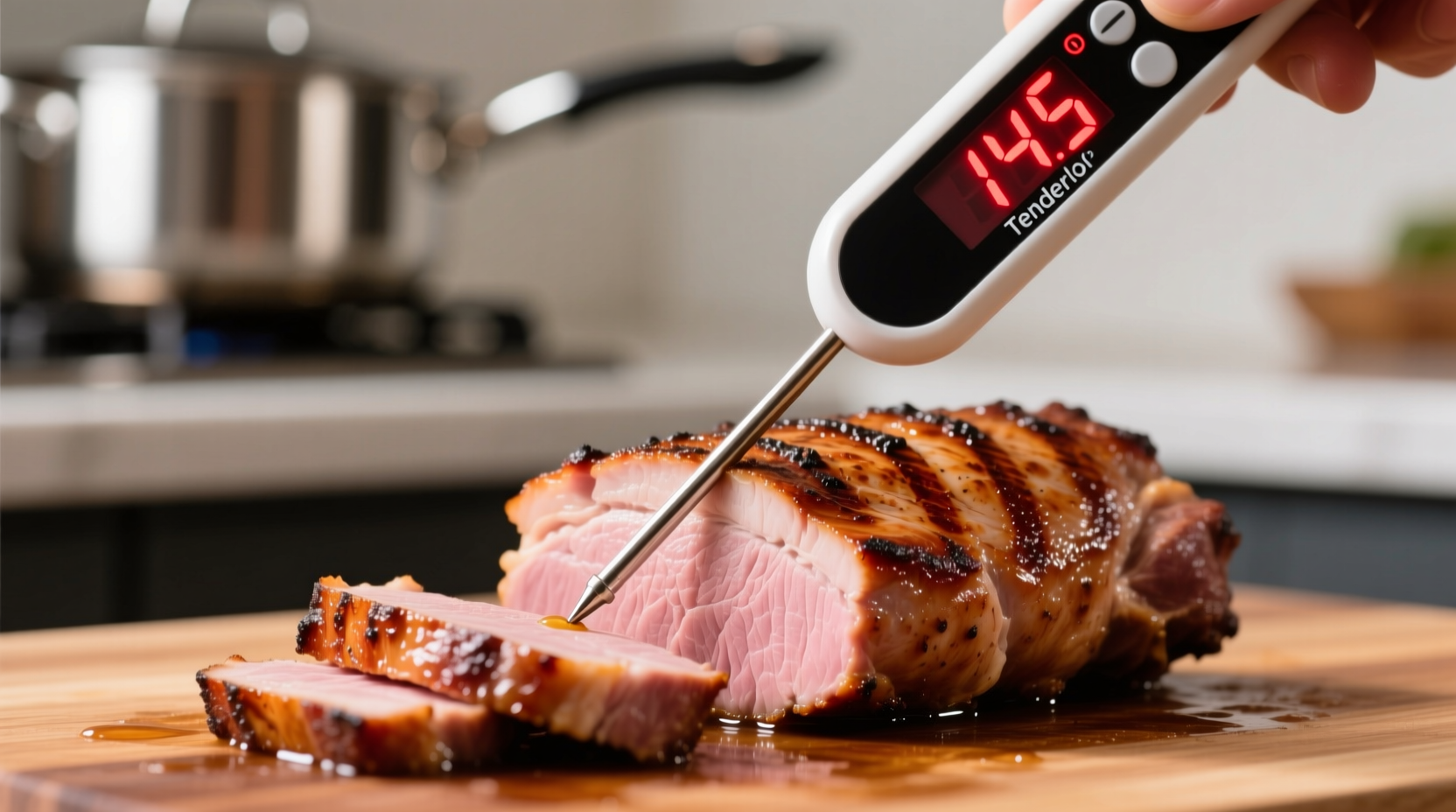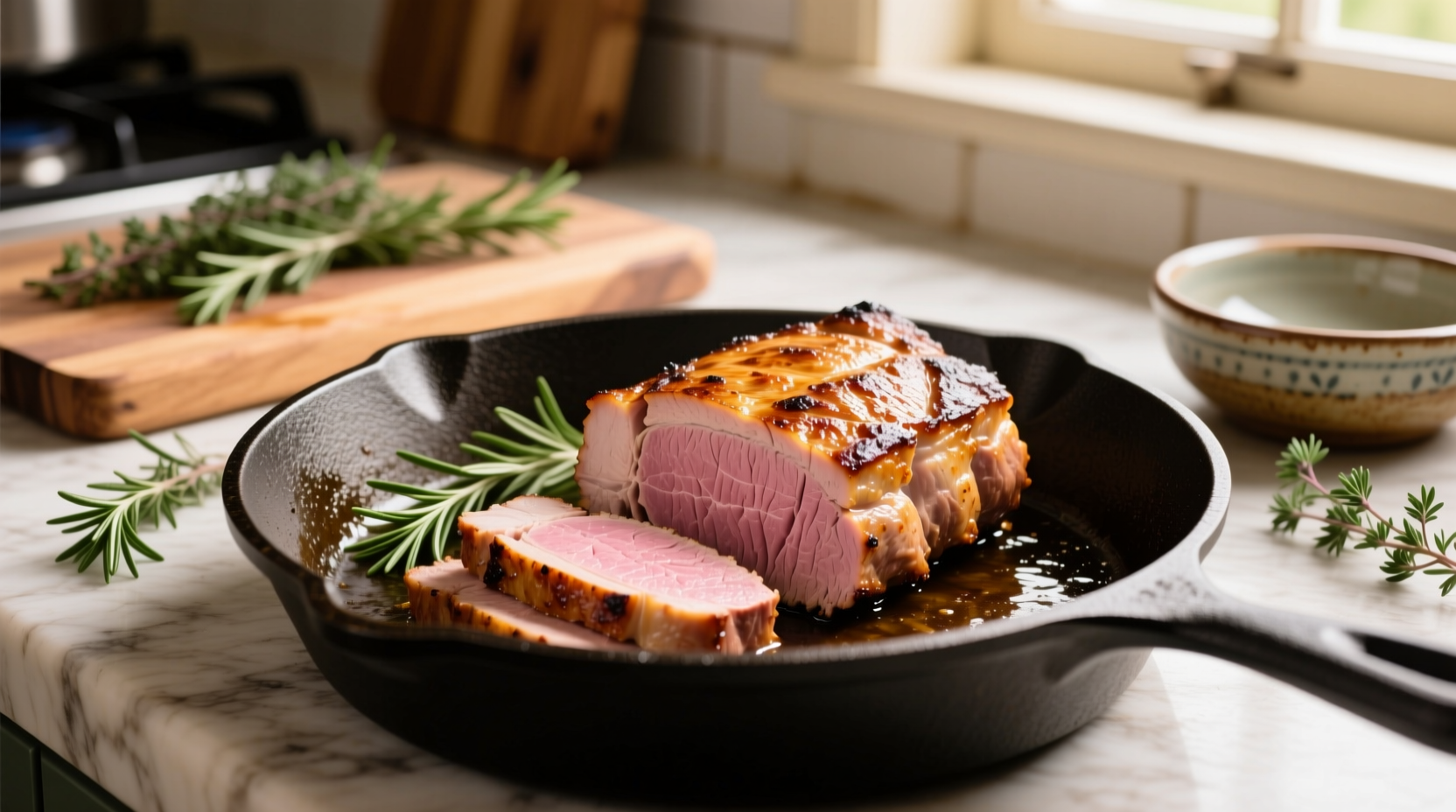Imagine slicing into a pork tenderloin that's perfectly pink in the center—moist, flavorful, and safe to eat. That's the magic of cooking to the precise temperature of 145°F. In this comprehensive guide, you'll discover exactly what temperature to cook pork tenderloin to, why this specific temperature matters, and professional techniques to achieve restaurant-quality results in your own kitchen. Whether you're using an oven, grill, or sous vide, these evidence-based guidelines will transform your pork cooking forever.
The Evolution of Pork Cooking Temperatures
Gone are the days when pork had to be cooked until well-done and dry. The science of pork preparation has evolved significantly over the past decade. In 2011, the USDA revised its recommended cooking temperature for whole-muscle pork cuts from 160°F down to 145°F with a 3-minute rest period. This change came after extensive research by the American Meat Science Association confirmed that pathogens in pork are effectively eliminated at lower temperatures when proper resting time is observed.
| Year | Recommended Temperature | Scientific Basis |
|---|---|---|
| Pre-2011 | 160°F (71°C) | Conservative approach to eliminate trichinosis concerns |
| 2011-Present | 145°F (63°C) + 3-min rest | Research showed pathogens eliminated at lower temperatures with resting |
Why 145°F Is the Perfect Temperature for Pork Tenderloin
The sweet spot of 145°F represents the ideal balance between food safety and optimal texture. At this temperature:
- Trichinella parasites are completely destroyed after 3 minutes at 145°F
- Salmonella and other pathogens are eliminated
- The meat retains its natural juices and tenderness
- You achieve that desirable light pink color throughout
Many home cooks still overcook pork out of outdated safety concerns, resulting in dry, tough meat. Modern farming practices have virtually eliminated trichinosis risks in commercial pork, making the lower temperature both safe and superior for quality.

How to Measure Temperature Accurately
Proper temperature measurement is critical for perfect results. Follow these steps:
- Use a high-quality instant-read thermometer (Thermapen or similar)
- Insert the probe into the thickest part of the tenderloin, avoiding fat or bone
- Take multiple readings in different spots to ensure even cooking
- Remove from heat source when thermometer reads 140°F (5-7°F below target)
- Allow to rest for 3-5 minutes (temperature will rise 5-10°F during resting)
Remember that carryover cooking will raise the internal temperature even after removing from heat. This is why pulling the meat at 140°F ensures it reaches the perfect 145°F during resting.
Cooking Method Considerations
While the target temperature remains consistent, different cooking methods require slight adjustments:
- Oven roasting: Preheat to 400°F, cook until internal temperature reaches 140°F (approximately 20-25 minutes for a 1.5 lb tenderloin)
- Grilling: Use two-zone cooking, sear over direct heat then move to indirect heat until 140°F
- Sous vide: Cook at 135-140°F for 1-4 hours, then sear briefly for crust
- Pan-searing: Sear on all sides, finish in 375°F oven until 140°F
Each method has specific timing considerations, but the temperature target remains your reliable guide to perfection.
Avoiding Common Temperature Mistakes
Even experienced cooks make these temperature-related errors:
- Not calibrating thermometers: Test your thermometer in ice water (should read 32°F) or boiling water (212°F at sea level)
- Incorrect probe placement: Inserting too close to the surface gives false low readings
- Cutting to check: This releases precious juices—always use a thermometer instead
- Ignoring resting time: Skipping the rest period results in drier meat as juices escape
According to a 2023 survey by the Food Safety and Inspection Service, 68% of home cooks still rely on visual cues rather than thermometers when cooking pork, leading to inconsistent results and unnecessary overcooking.
When to Adjust Temperature Guidelines
While 145°F is the standard recommendation, certain situations may require adjustments:
- For immunocompromised individuals: Some healthcare providers still recommend 160°F for maximum safety
- When using older thermometers: If unsure of accuracy, cook to 150°F to ensure safety margin
- For extended holding periods: If keeping cooked pork warm for service, maintain at 140°F or higher
Always prioritize food safety, but understand that modern guidelines provide significant flexibility for optimal quality without compromising safety.
Perfect Pork Every Time: Final Tips
Master these professional techniques for flawless pork tenderloin:
- Bring meat to room temperature (30-60 minutes) before cooking for even heating
- Pat dry thoroughly before cooking to ensure proper searing
- Use a thermometer with a 2-3 second response time for accuracy
- Rest on a wire rack, not a cutting board, to prevent steaming and sogginess
- For thicker cuts, tent loosely with foil during resting to control carryover cooking
Remember that pork tenderloin is a lean cut with minimal fat marbling, making precise temperature control essential for preventing dryness. The difference between 145°F and 155°F can mean the difference between succulent perfection and disappointing dryness.











 浙公网安备
33010002000092号
浙公网安备
33010002000092号 浙B2-20120091-4
浙B2-20120091-4